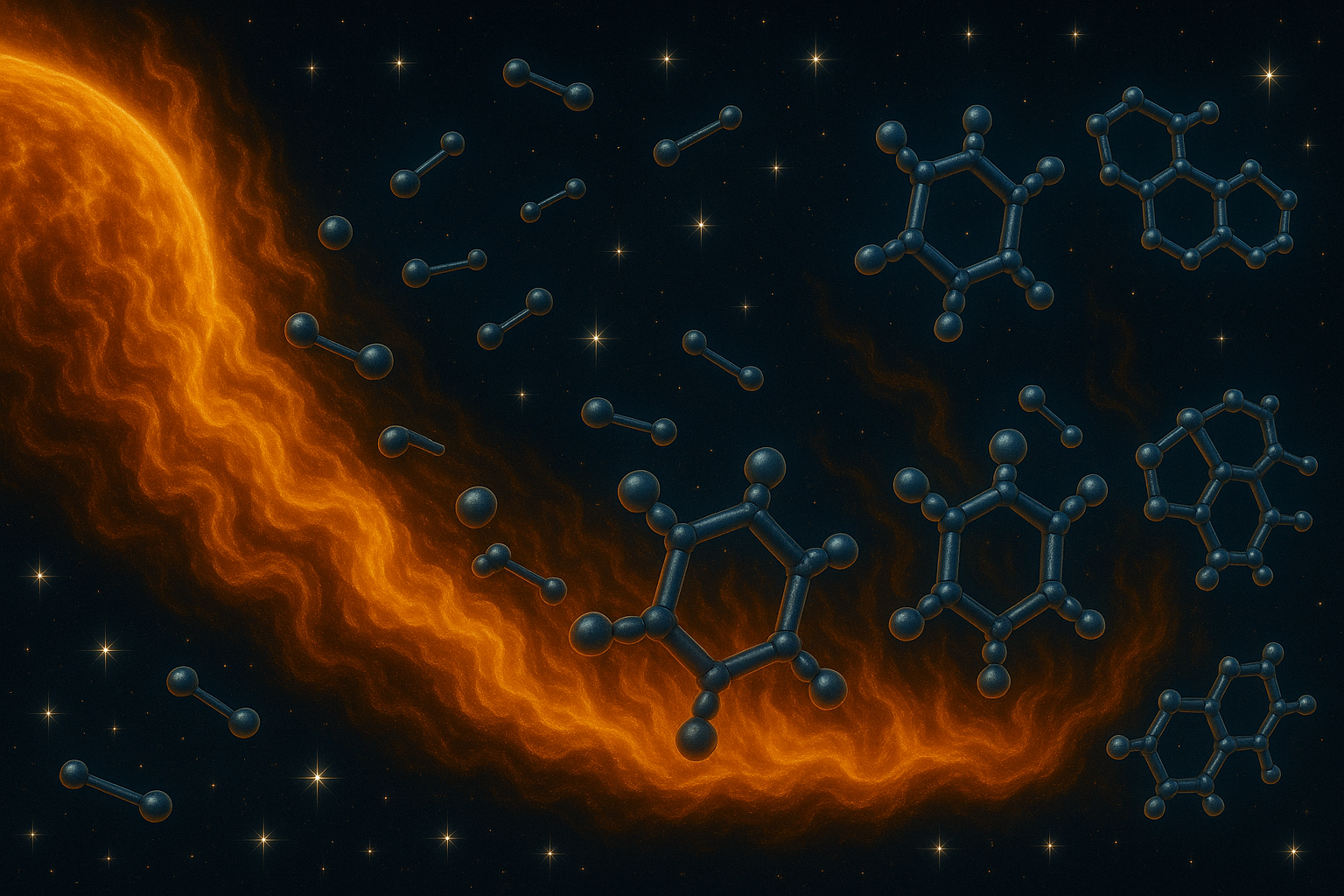The BRAHMA model was developed to simulate the chemical evolution of envelopes surrounding carbon-rich asymptotic giant branch (AGB) stars. As a conceptual counterpart to our earlier SHIVA model (which focused on dust destruction processes), BRAHMA emphasizes dust formation mechanisms, with particular attention to the synthesis and growth of polycyclic aromatic hydrocarbons (PAHs).
Our research objectives include:
- Developing a comprehensive reaction network for PAH formation and growth, beginning with the fundamental building block - the benzene ring
- Integrating this network into a kinetic model to simulate PAH evolution in AGB stellar envelopes
The model builds upon the work of Isabelle Cherchneff and colleagues, who established a dynamical framework for AGB envelopes incorporating periodic shock waves. We adopt their physical parameters for our astrochemical modeling. While we began with Cherchneff's reaction network as our foundation, we have substantially expanded it by incorporating numerous reactions involving both aromatic and non-aromatic hydrocarbons.
Our team has conducted an extensive literature review to compile kinetic data for hydrocarbon reactions, many of which had never previously been applied in astrochemical contexts. This effort remains ongoing, as the remarkable complexity of carbonaceous molecules makes complete pathway mapping an enormous challenge.
Additionally, BRAHMA incorporates equations describing dust growth through accretion and coagulation processes. The model assumes silicon carbide (SiC) particles serve as initial nucleation seeds, forming in the envelope prior to the development of aromatic molecular structures.
Here you can find our chemical reaction network and additional information.
